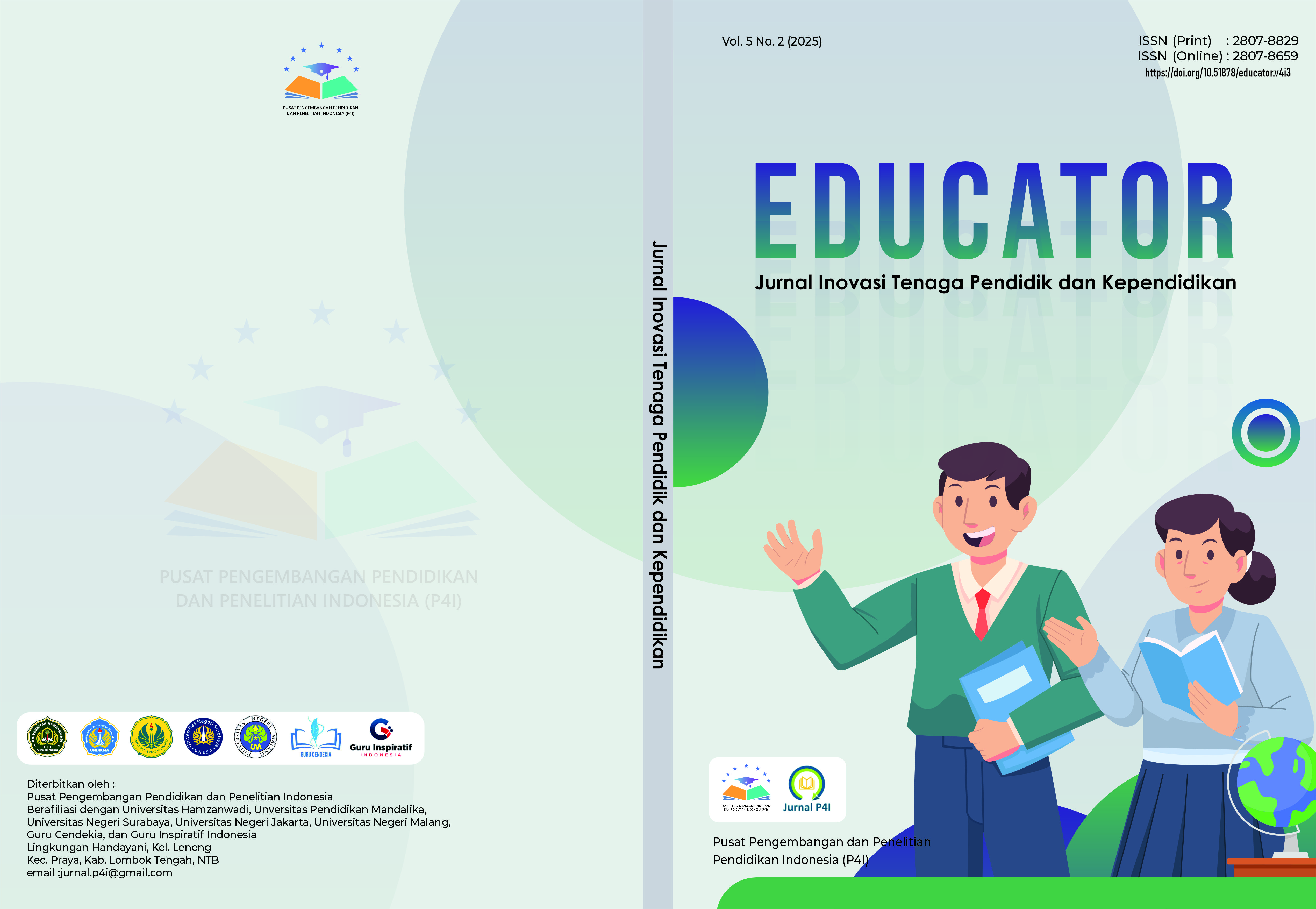PERBANDINGAN MODEL PEMBELAJARAN MAKE A MATCH DAN CARD SORT TERHADAP HASIL BELAJAR IPS KELAS VIII
DOI:
https://doi.org/10.51878/educator.v5i2.6864Keywords:
Make a Match, Card Sord, Hasil BelajarAbstract
This research was conducted to examine the differences in students’ learning achievements when applying two cooperative learning models, namely Make a Match and Card Sort. The study employed an experimental design with a quantitative approach and was carried out at SMP Negeri 1 Simbuang during the 2023/2024 academic year. The participants consisted of 23 students, randomly assigned into two groups using a simple lottery technique. The first group was taught through the Make a Match strategy, while the second group received instruction with the Card Sort strategy. Data were gathered using observation, documentation, and achievement tests, and further analyzed with the assistance of SPSS. The findings revealed that students taught through the Make a Match model obtained an average score of 71.27, whereas those taught using the Card Sort model achieved a higher mean score of 86.25. Results of the independent sample t-test indicated a significance value of 0.001, which is lower than 0.005, confirming a statistically significant difference between the two models. Consequently, it can be inferred that the Card Sort model demonstrates greater effectiveness in enhancing the learning performance of eighth-grade students at SMP Negeri 1 Simbuang compared to the Make a Match model.
ABSTRAK
Penelitian ini dilaksanakan untuk mengetahui perbedaan hasil belajar siswa dengan menggunakan dua model pembelajaran kooperatif, yaitu Make a Match dan Card Sort. Jenis penelitian yang dipakai adalah eksperimen dengan pendekatan kuantitatif, bertempat di SMP Negeri 1 Simbuang pada Tahun Ajaran 2023/2024. Subjek penelitian berjumlah 23 siswa yang ditentukan melalui teknik undian sederhana, sehingga terbentuk dua kelompok eksperimen. Kelompok pertama diberi perlakuan dengan model Make a Match, sedangkan kelompok kedua menggunakan model Card Sort. Proses pengumpulan data dilakukan melalui observasi, dokumentasi, serta tes hasil belajar, kemudian dianalisis menggunakan bantuan program SPSS. Hasil penelitian memperlihatkan bahwa nilai rata-rata hasil belajar siswa yang diajar dengan model Make a Match sebesar 71,27, sedangkan siswa yang belajar dengan model Card Sort memperoleh rata-rata 86,25. Uji beda menggunakan independent sample t-test menunjukkan nilai signifikansi 0,001 yang lebih kecil dari 0,005, menandakan adanya perbedaan yang signifikan antara kedua model. Dengan demikian, dapat disimpulkan bahwa penerapan model Card Sort lebih efektif dibandingkan Make a Match dalam meningkatkan capaian belajar siswa kelas VIII SMP Negeri 1 Simbuang.
Downloads
References
Abdullah, R., & Supriadi, A. (2019). Teacher-centered learning and its impact on student motivation: A study in Indonesian schools. Journal of Education and Learning, 13(2), 145–154. https://doi.org/10.11591/edulearn.v13i2.12345
Chofifah, N., Kurniawati, A., & Hasanah, R. (2024). The effectiveness of Make a Match learning model in improving students’ problem-solving skills. International Journal of Instruction, 17(1), 75–92. https://doi.org/10.29333/iji.2024.1716a
Fitriani, N. (2021). The impact of Make a Match cooperative learning model on students’ motivation and learning outcomes in social studies. Journal of Education Research and Evaluation, 5(2), 112–121. https://doi.org/10.23917/jere.v5i2.9876
Kolb, D. A. (2015). Experiential learning: Experience as the source of learning and development (2nd ed.). Pearson Education.
Knudsen, E. I. (2016). Sensitive periods in the development of the brain and behavior. Journal of Cognitive Neuroscience, 28(8), 1415–1428. https://doi.org/10.1162/jocn_a_00910
Meri, M. (2020). Perbandingan model pembelajaran Make A Match dengan Card Sort menggunakan media handout terhadap hasil belajar IPA terpadu siswa kelas VIII SMP Negeri 20 Pekanbaru tahun ajaran 2019/2020 (Unpublished undergraduate thesis). Universitas Islam Riau.
Mulyono, H. (2018). The influence of motivation and learning style on students’ achievement: Evidence from Indonesian schools. Journal of Education and Practice, 9(2), 56–64.
OECD. (2020). PISA 2018 results (Volume VI): Are students ready to thrive in global societies? OECD Publishing. https://doi.org/10.1787/d5f68679-en
OECD. (2022). PISA 2022 results (Volume I): The state of learning worldwide. OECD Publishing. https://doi.org/10.1787/8a2b25e2-en
Rahman, A., & Hidayati, N. (2020). The effect of Card Sort strategy on students’ critical thinking and conceptual understanding in social studies. Journal of Social Science Education, 14(3), 210–219. https://doi.org/10.15294/jse.v14i3.35678
Slavin, R. E. (2019). Educational psychology: Theory and practice (13th ed.). Pearson.
Susanti, R., & Radia, D. (2024). Implementation of Make a Match learning model to enhance students’ motivation and learning outcomes in secondary schools. Journal of Educational Research and Innovation, 12(1), 34–47. https://doi.org/10.1016/jeri.2024.01.004
Vygotsky, L. S. (2018). Mind in society: The development of higher psychological processes (Reprint ed.). Harvard University Press. (Original work published 1978)
Wahyuni, S., Putra, A., & Lestari, D. (2023). Student-centered learning models and their impact on social and affective skills. Indonesian Journal of Educational Review, 10(2), 112–127. https://doi.org/10.21009/ijer.102.07
Zubaidah, S. (2018). 21st-century skills: Learning innovation in the new curriculum. Journal of Educational Science and Technology, 4(1), 1–12. https://doi.org/10.26858/est.v4i1.4194
Downloads
Published
How to Cite
Issue
Section
License
Copyright (c) 2025 EDUCATOR : Jurnal Inovasi Tenaga Pendidik dan Kependidikan

This work is licensed under a Creative Commons Attribution-ShareAlike 4.0 International License.
















